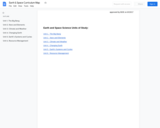
Grades 9-12 Regular Earth & Space Science Scope & Sequence
- Subject:
- Physical Science
- Material Type:
- Full Course
- Provider:
- Liberty Public Schools
- Date Added:
- 08/15/2017

Grades 9-12 Regular Earth & Space Science Scope & Sequence
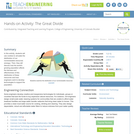
In this activity, students will use cookies to simulate the distribution of our nonrenewable resources (energy). Then, they will discuss how the world's growing population affects the fairness and effectiveness of this distribution of these resources and how engineers work to develop technologies to support the population.
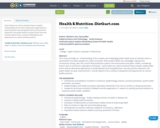
Case studies are used to examine these complex relationships and as well as alternative approaches to achieving both local and global food security and the important role public health can play. Guest lecturers include experts from a variety of disciplines and experiences on various health products.
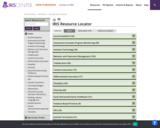
IRIS Resource Locator

Iowa celebrated its 150th anniversary of statehood in 1996 . [Photo by Dorothy Dvorachek] Meskwaki Singers and Dancers of Tama perform on the grounds of the state capitol at the 1996 Festival of Iowa Folklife. As part of that celebration, some 150 Iowa musicians, craftspeople, storytellers, radio announcers, farmers, cooks, doctors, basketball players, teachers, scholars, and state officials participated in the Smithsonian Institution’s Festival of American Folklife on the National Mall of the United States in Washington, D.C. They demonstrated various aspects of Iowa’s cultural traditions to more than 1.2 million visitors, and received a great deal of media attention—generating some 600 newspaper articles and 50 television and radio segments. This living exposition of Iowa’s cultures was remounted on the State Capitol Grounds in Des Moines in August 1996. Over 85,000 people visited this Festival of Iowa Folklife. In addition, the festivals generated an Iowa Public Television documentary, Iowa Folks ...
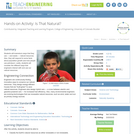
Students will brainstorm ways that they use and waste natural resources. Also, they will respond to some facts about population growth and how people use petroleum. Lastly, students will consider the different ways that engineers interact with and use our natural resources.

This is a model lesson plan for the topioc resources for class VII of NCERT
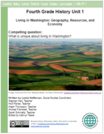
The unit is focused on the examination of geography in terms of “place.” Students dive into inquiry to answer the compelling question, What is unique about living in Washington? Through this question students will understand where and why people live in Washington State. Students will dive into the regions of Washington State and define it through many characteristics. Students will ultimately choose a region to become an expert on and communicate what makes that region unique. Each student’s performance task product will reflect choice and build upon student strengths according to their skill set.
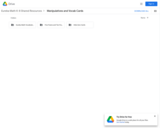
Eureka Math Vocab cards and Manipulatives
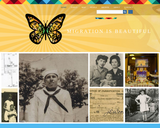
This website details the migration patters in and out of Iowa over the last two centuries. Includes the history of Latinos in Iowa.
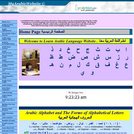
This website is a collection of resources concerning learning Arabic as a second language as well as information about Arab culture, Islam, and various Arab countries. There are links to videos from YouTube on the site relating to Arabic study, including songs and lessons, as well as a host of other more unrelated things, such as tornadoes. Links to opportunities to study Arabic, teacher resources, and Arabic newspapers are available.
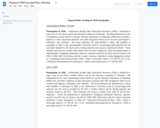
School Districts (Public or Private)
Participation in OER: Collaboration through Open Educational Resources (OER) is beneficial in many ways for the district and for the education community in Nebraska. The Educational Service Unit Coordinating Council (ESUCC) and the Nebraska Department of Education (NDE) have provided a platform to share educational materials with OER designation which can be reviewed and aligned to Nebraska’s state standards. The board authorizes the superintendent to allow staff members to participate in OER, at the superintendent’s discretion, both by incorporating OER materials into the curriculum adopted by the board and by sharing materials and resources owned by the district. Those materials and resources include works made for hire by district employees. Unless the superintendent or superintendent’s designee(s) determines otherwise, materials owned by the district may be shared to the ESUCC-NDE OER Collection(s) with the Creative Commons Attribution License designation of either (1) “Attribution-Noncommercial-Share Alike,” which is universally noted as “CC BY-NC-SA”; or (2) “Attribution-Noncommercial-No Derivatives,” which is universally noted as “CC BY-NC-ND.”
Participation in OER. Collaboration through Open Educational Resources (OER) is beneficial in many ways for the ESU’s member districts and for the education community in Nebraska. The Educational Service Unit Coordinating Council (ESUCC) and the Nebraska Department of Education (NDE) have provided a platform to share educational materials with OER designation which can be reviewed and aligned to Nebraska’s state standards. The board authorizes the administrator to allow staff members to participate in OER, at the administrator’s discretion, both by incorporating OER materials into the services provided by the ESU to member districts and by sharing materials and resources owned by the ESU. Those materials and resources include works made for hire by ESU employees. Unless the administrator or administrator’s designee(s) determines otherwise, materials owned by the ESU may be shared to the ESUCC-NDE OER Collection(s) with the Creative Commons Attribution License designation of either (1) “Attribution-Noncommercial-Share Alike,” which is universally noted as “CC BY-NC-SA”; or (2) “Attribution-Noncommercial-No Derivatives,” which is universally noted as “CC BY-NC-ND.”

This customized independent study course puts Sloan Fellows MBA students into direct contact with innovators tackling global needs in education, healthcare, and energy/environment. Co-designed projects address low-income markets in the U.S. or globally, focusing on the application of new ideas and technology rooted in MIT innovations or the Boston ecosystem. Every project aims to develop better ways for the right innovations to reach scale, sustainability, and quality, thereby improving lives and uncovering opportunities in underserved markets.
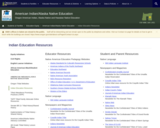
This is a link to the Oregon Department of Education Indian Education Resources web page.
It includes Educator Resources, Student and Parent Resources, and Additional Helpful Links.
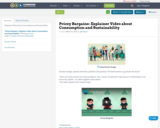
Explainer Video about Consumption and Sustainability
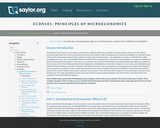
The purpose of this course is to provide the student with a basic understanding of the principles of microeconomics. At its core, the study of economics deals with the choices and decisions that have to be made in order to manage scarce resources available to us. Microeconomics is the branch of economics that pertains to decisions made at the individual level, i.e. by individual consumers or individual firms, after evaluating resources, costs, and tradeoffs. "The economy" refers to the marketplace or system in which these choices interact with one another. In this course, the student will learn how and why these decisions are made and how they affect one another in the economy. Upon successful completion of this course, students will be able to: Think intuitively about economic problems; Identify how individual economic agents make rational choices given scarce resources and will know how to optimize the use of resources at hand; Understand some simplistic economic models related to Production, Trade, and the Circular Flow of Resources; Analyze and apply the mechanics of Demand and Supply for Individuals, Firms, and the Market; Apply the concept of Marginal Analysis in order to make optimal choices and identify whether the choices are 'efficient' or 'equitable'; Apply the concept of Elasticity as a measure of responsiveness to various variables; Identify the characteristic differences amongst various market structures, namely, Perfectly Competitive Markets, Non-Competitive Markets, and Imperfectly Competitive Markets and understand the differences in their operation; Analyze how the Demand and Supply technique works for the Resource Markets. (Economics 101; See also: Business Administration 200)
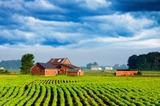
The purpose of this lesson is build on a previous lesson that teaches how to take out a farm loan.This lesson is designed for adult learners who are pursuing a career in farming. It focuses on reading scientific and technical texts (Grade 6) related to farming business plans. It will help learners identify the resources necessary to develop a simple farm business plan. The learners will have the opportunity to apply their acquired knowledge in class activities such as discussion to analyze case studies and develop the basic outline of their resource sheet.
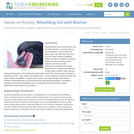
Students learn about soil properties and the effect biochar—charcoal used as a soil amendment—has on three soil types, sand, loam and clay. They test the soils’ water retention capability before and after the addition of biochar. During the activity, student teams prepare soil mixtures, make observations (including microscopic examinations), compare soil properties, conduct water retention tests, take and record measurements, and analyze their observations and data. They see how the physical properties of soils—color, texture, and particle size—can be indicators of nutrient content and water retention capabilities to support plant growth. From their findings, they consider biochar’s potential benefits for environmental and agricultural applications, especially in conditions of drought and depleted soils. An activity lab sheet is provided to guide experimental data collection and analysis.
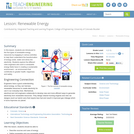
In this lesson, students are introduced to the types of renewable energy resources. They are involved in activities to help them understand the transformation of energy (solar, water and wind) into electricity. Students explore the different roles of engineers working in renewable energy fields.
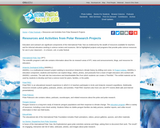
This article provides an overview of educational resources available from polar research programs.